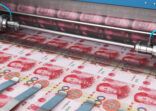The price-to-earnings ratio of the Hang Seng China Enterprise Index, comprising of the 40 largest H-shares, stood at merely 6.81x as of June 30, the lowest among all major stock market indices globally, the report showed.
The Hang Seng Index was also very low, with a PE of 10.32. Only Russia’s MICEX was worse, trading at a P/E ratio of 7.67.
Other markets with low PEs included the Dubai Financial Market General Index at 11.12 and the Singapore benchmark Straits Times Index (11.94).
In terms of the average daily turnover, mainland stocks saw a 28% drop to HK$21.5bn ($2.77bn) compared to the second half of 2015. Still, this segment accounted for 32% of the overall Hong Kong market.
Average daily turnover of non-mainland stocks on the HSI dropped a slight 3% from six months earlier to HK$12.1bn.
ETFs also fell hard, which recorded a 34% drop in during the same period to HK$4.5bn.
A-share ETFs had average daily turnover halved to HK$2.1bn compared to the first half 2015.
But issuance of new ETFs has been active. Ten new ETFs, including the new leveraged and inverse exchange-traded products by Samsung AM, were listed in the first half of this year.
CSOP is also going to launch a pair of leveraged and inverse ETFs tracking India’s benchmark Nifty50 next Wednesday.
The report also commented on Shanghai-Hong Kong Stock Connect flows, which are still relatively light. Northbound and southbound daily trading reached RMB 3bn ($449m) and RMB 2.2bn, respectively, in the first half of this year.
















